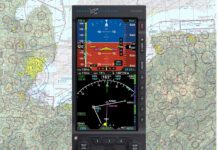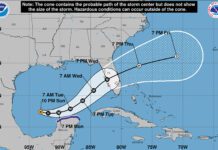Slamming the FAA over its made-for-airlines user fee scheme is quite fashionable right now among the various general aviation alphabet soup organizations. Although nothing on the horizon could do as much damage to general aviation, its important to understand an underlying reason the FAA gives for its user-fee proposal is to fund the Next Generation Air Transportation System, or NGATS. One of NGATSs stated objectives is to develop an ATC system using “modern technology and state-of-the-art procedures to handle increases in the volume of air traffic.” But there isnt a detailed plan for NGATS we can analyze, see what were supposed to be getting in exchange for higher taxes and make recommendations. Its like being asked to sign up for a mail-order spouse without a close-up photo. To design and integrate NGATS, Congress in 2003 created the Joint Planning and Development Office (JPDO), consisting of elements from the FAA and other federal agencies. In late 2004, the JPDO released its integrated plan, a 40-page document filled with new-age terms like “transformation strategies,” “capability to reduce weather impacts,” “cross-strategy linkage” and a stated desire to “harmonize equipage and operations globally.” 288 But there are no deadlines or price tags. And it doesnt appear any will be forthcoming in the near future. As of late March, the JPDO has not yet executed a Memorandum of Understanding between its constituent agencies defining their roles and responsibilities, something that was supposed to happen at least a year ago. On March 29, in a hearing before the Subcommittee on Space and Aeronautics of the U.S. House of Representatives Committee on Science and Technology, JPDOs top management appeared, but lacked answers to basic questions about NGATS. According to published reports, subcommittee Chairman Mark Udall stated, “We havent yet seen a clear plan from FAA and the JPDO for implementing agreed-upon NextGen technologies and procedures into the National Airspace System expeditiously.” Meanwhile, many general aviation groups have recorded their support of NGATS, pointing to the need for a more efficient airspace system. Yeah, but: Airports and runways are a major component of this equation, too. In fact, the vast majority of delays can be traced to too little pavement and too many airliners trying to use it rather than a lack of ATC “modernization.” General aviation groups make a big deal about modernization being separate from funding. Thats good: We saw this movie in the early 1980s, when government promised modernization in exchange for higher taxes. That didnt pan out, and were having the same basic debate today. This time around, the FAA has placed the cart of securing NGATS funding through user fees way ahead of the horse of defining NGATS. Industry is correctly separating the two issues but really shouldnt be sipping this Kool-Aid at all. -Jeb Burnside



